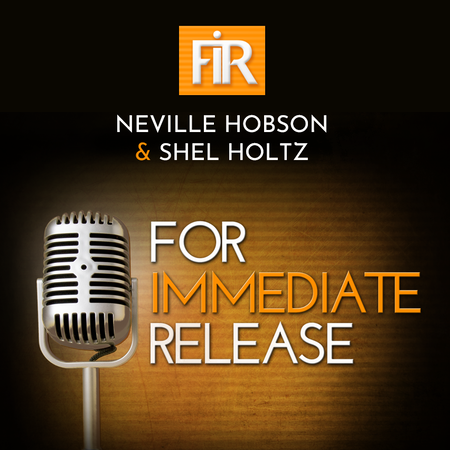How do four of the most prominent AI chatbots compare? That question was put to me recently by a friend who has a fair amount of scepticism about AI chatbots and was keen to know which one is best.
Inevitably, a question like that will get an “It depends…” answer. I’ve been using four chatbots for quite some time, each one depending on the type of information I’m seeking. I find each of them invaluable research assistants who are significant helpers in my work and my personal interests. I use at least one of them several times a day.
So, considering each of these four – ChatGPT, Claude, Bing, and Bard – I decided to find the answer to my friend’s question.
And where better to look for help than to ask the chatbots?
I put this question as a prompt to each:
How do ChatGPT, Bard, Bing AI and Claude AI compare?
Prompt to 4 chatbots
The responses I received from each to that prompt gave me an excellent foundation from which to create this meaningful response.
ChatGPT, Bard, Bing AI, and Claude AI are all large language models (LLMs) that can be used for various tasks, such as generating text, translating languages, writing different kinds of creative content, and answering your questions in an informative way.
However, there are some critical differences between the four models.
ChatGPT is built on OpenAI’s GPT-3 family of LLMs. It is known for its ability to generate creative text formats, like poems, code, scripts, musical pieces, emails, letters, etc., and answer your questions informally. There is also a growing ecosystem of plugins that add useful functionality, such as enabling access to online resources, reading PDF files, and more. But, ChatGPT can sometimes provide incorrect or fictional information.
Bard is built on Google’s LaMDA (Language Model for Dialogue Applications) LLM. It is known for its ability to follow instructions and complete requests thoughtfully. Bard can also generate different creative text formats of text content, like poems, code, scripts, musical pieces, email, letters, etc., and answer your questions in an informative way. Usually, it will offer two or more variants to its response. However, Bard is still under development, and its capabilities are less extensive than ChatGPT’s.
Bing AI is built on Microsoft’s Turing NLG LLM. It is known for its ability to answer your questions in an informative way, even if they are open-ended, challenging, or strange. Bing AI can also generate different creative text formats of text content, like poems, code, scripts, musical pieces, email, letters, etc. It can also provide links to sources that it uses. However, Bing AI is not as versatile as ChatGPT or Bard.
Claude AI is built on Anthropothic’s Consitutional AI. This involves training it on a diverse dataset with feedback from humans to align responses with helpfulness, honesty and harmlessness. It is known for its safety and reliability. Claude AI is less likely to generate harmful or offensive content. Claude AI is also more customizable, allowing users to fine-tune its responses to their specific needs. With Claude, you can also upload files directly into the app prompt bar. However, Claude AI is less powerful or versatile than ChatGPT or Bard.
This table summarizes the key differences between ChatGPT, Bard, Bing AI, and Claude AI:
| Feature | ChatGPT | Bard | Bing AI | Claude AI |
|---|---|---|---|---|
| Training data | OpenAI’s GPT-3 | Google’s LaMDA | Microsoft’s Turing NLG | Anthropothic’s Constitutional AI |
| Computational cost | More expensive | More expensive | Less expensive | Less expensive |
| Integration with other products | Integration with OpenAI products | Integration with Google products | Integration with Microsoft products | Not integrated with other products |
| Customization | More customizable | Less customizable | Less customizable | More customizable |
| Safety and reliability | Less safe and reliable | Safer and more reliable | Safer and more reliable | Safest and most reliable |
Ultimately, the best choice will depend on your specific needs and preferences.
If you need an LLM that is powerful and versatile, then ChatGPT is a good option. This is the research assistant I use more than any of the others. I use ChatGPT Plus, the paid version, which offers more features than the free version.
If you need an LLM that is safe and reliable, then Claude AI is a good option.
All the chatbots listed are free to use. As mentioned, ChatGPT also offers ChatGPT Plus, a premium version for $20 per month and has announced ChatGPT Enterprise for large organisations with costs dependent on usage. Claude has announced plans for a premium version that might cost $50 per month.
There are many other AI chatbots, too, a real long tail of choice, including tools built into or complementary to other programs and apps such as the freemium JetPack AI Assistant in WordPress, Jasper, and more.
And there are numerous generative AI image creators, such as DALL-E 2 (from OpenAI, the maker of ChatGPT), Midjourney, Stable Diffusion, Bing Image Creator, Adobe Firefly, PhotoShop, and others. I’ve not included these in this article which is focused on four generative AI text creators.
A useful resource is theresanaiforthat.com, an aggregator site where you will find many more AI tools. The site’s name is apt.
A real time-saver
How you use an AI chatbot is key to the success or otherwise you will achieve. Much store is placed in the prompt you give, the words and phrases you compose that tell the chatbot what you want it to do. I agree – the more accurate and meaningful your prompt, the more likely the output in first-response results will be useful and likely to be close to what you’re looking for.
And the second key to success is what you do with the chatbot’s output you have received. I call these chatbots ‘research assistants’ for a very good reason: broadly speaking, they are the equivalent of a human assistant who researches a topic and presents the findings.
From that, I decide what’s next, involving verification of facts, checking sources and adding citations (links) where it helps clarity and gives confidence to the reader. Then, I write and produce the final product, so to speak, that the research results have enabled me to create.
So, the AI chatbot can do much of the heavy lifting for you with research. You have to do the writing. There are no shortcuts there! But you can save huge amounts of time.
(Image at top: “Three AI chatbots sitting around a table having a nice chat”: Bing Image Creator powered by DALL-E. Table content from Bard.)
[Corrections 29/8/23: Description of Claude AI updated to accurately reflect its training data process. This updated information was provided by the chatbot.]












2 responses to “ChatGPT, Claude, Bing, or Bard?”
So, of course, Neville. My findings are somewhat similar – there are no shortcuts, as you say, despite the blather about generative app like this responding to prompts fast, and nicely punctuated. In the end, well punctuated bloodless writing won’t impress critical readers. I asked one of these to write a poem in the style of Bob Dylan and the results were so lame, with cliches and unpoetic lines, I am confident a seventh grader could do better. So yes, ‘it depends’ whether one wants safe content for emails, and web pages, or whether one is looking for real creativity.
Thanks for your comment, Angelo. While public debate continues on the benefits and risks of AI chatbots like those mentioned in this article, this is a market in great movement that’s evolving right in front of our eyes. I find such tools very useful as researchers, as I mentioned.
I’m now exploring Claude Pro, the paid-for version launched just a few days ago, with very good results so far. To your point about the poem you mentioned, this is all about the prompt you give, no? Garbage in garbage out if the prompt isn;’t good enough!